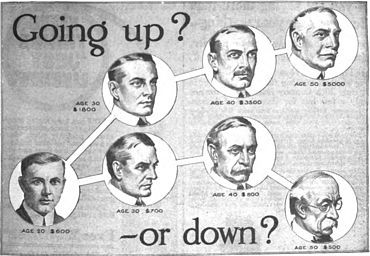
Back حراك اجتماعي Arabic İctimai hərəkətlilik Azerbaijani Mobilitat social Catalan Sociální mobilita Czech Mudoledd cymdeithasol Welsh Social mobilitet Danish Soziale Mobilität German Κοινωνική κινητικότητα Greek Socia moviĝeblo Esperanto Movilidad social Spanish

Social mobility is the movement of individuals, families, households or other categories of people within or between social strata in a society.[1] It is a change in social status relative to one's current social location within a given society. This movement occurs between layers or tiers in an open system of social stratification. Open stratification systems are those in which at least some value is given to achieved status characteristics in a society. The movement can be in a downward or upward direction.[2] Markers for social mobility such as education and class, are used to predict, discuss and learn more about an individual or a group's mobility in society.
- ^ "A Family Affair". Economic Policy Reforms 2010. 2010. pp. 181–198. doi:10.1787/growth-2010-38-en. ISBN 9789264079960.
- ^ Heckman JJ, Mosso S (August 2014). "The Economics of Human Development and Social Mobility" (PDF). Annual Review of Economics. 6: 689–733. doi:10.1146/annurev-economics-080213-040753. PMC 4204337. PMID 25346785. Archived (PDF) from the original on 2 June 2018. Retrieved 31 December 2019.